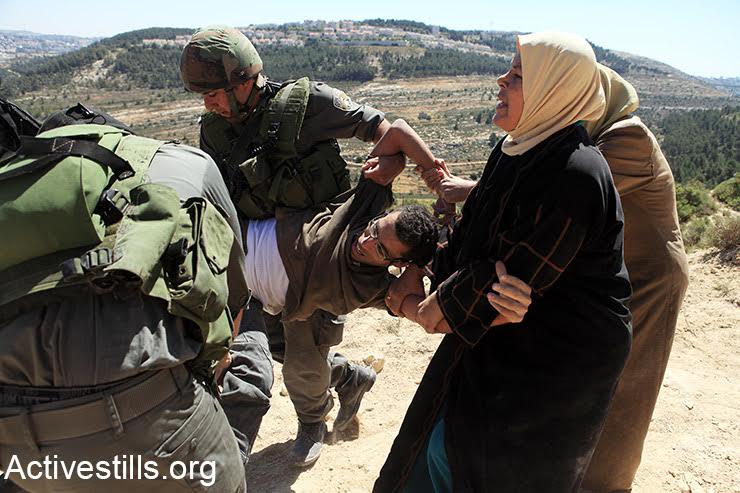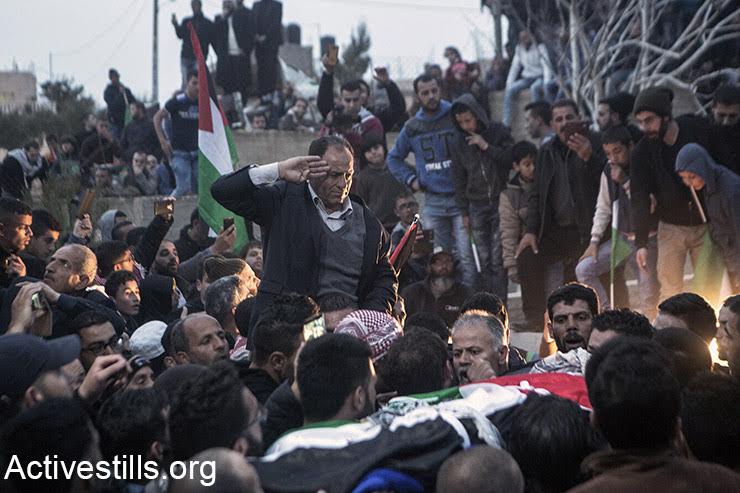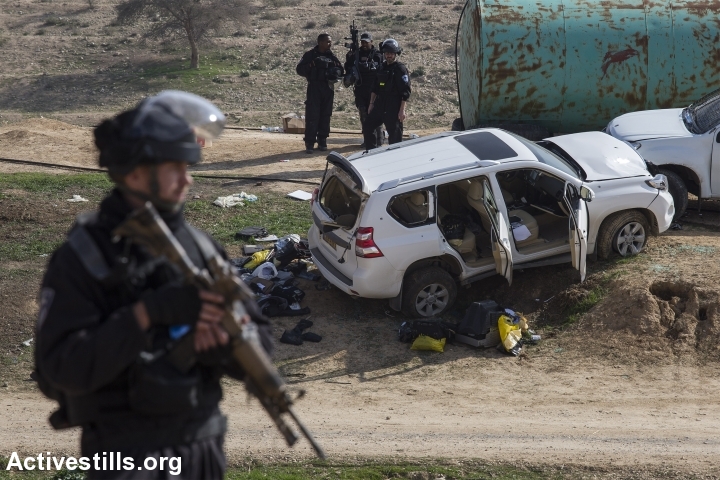In societies conditioned to see Palestinians and blacks as terrorists and criminals, the media and public are often ready to believe state-sanctioned falsehoods about activists like Basel al-Araj and Fred Hampton.
By Bram Wispelwey

In the early morning hours of December 4th, 1969, Chicago Black Panther leader Fred Hampton, alongside several fellow Panthers, engaged in a fierce shootout with Chicago Police. Hampton and Mark Clark were killed, and multiple Panthers were wounded. The seven survivors were arrested and charged with attempted murder, while the police officers were touted as heroes.
The only problem with this story? All of it, as told by the police, was false. In reality, the police fired nearly 100 shots at the men who were sleeping, with only one shot fired from one of the Panther’s weapons in defense.

What emerged in the course of an eight-year legal battle confirmed the kind of organized conspiracy that the Panthers had always asserted: the FBI and the Chicago Police Department had collaborated to assassinate Hampton, as part of the covert operations by COINTELPRO, while falsifying evidence to make him appear as the aggressor.
As the real evidence eventually showed, COINTELPRO was designed to eliminate young black leaders who were organizing resistance and preaching revolution, leaving behind them a vacuum filled by nihilistic gangs.
Despite the intrepid work of bringing the true story of Fred Hampton’s murder to light, it is still not well known among Americans. Rather, it was the police’s sensational version that captured popular imagination by neatly fitting into racist preconceptions.
That very same practice of rapidly producing an “official lie” is replicated by oppressive institutions around the world. In the early morning hours of March 6, 2017, after months on the run, 31-year-old Palestinian Basel al-Araj was shot to death by Israeli forces in his apartment just outside of Ramallah. Israeli police contend that they came only to arrest al-Araj, and that he fired on them first, leading to a shootout in which not a single Israeli was wounded.

Al-Araj was a well-known and respected intellectual, activist, and community organizer who understood and acted on the conviction that theories of resistance must be put into practice. Among the belongings found in the post-raid wreckage were testaments to his leftist intellectual commitment, including books by Marxist philosopher and theoretician, Antonio Gramsci. Al-Araj had long worked to expose and dismantle the Israeli occupation, encourage democratic elections in the West Bank, and decry the normalization of relations between Israel and the Palestinian Authority, particularly on the issue of coordinated security operations.
His resolve on these points landed him and his friends in a PA prison for five months in 2016, where they were tortured and went on a hunger strike. After their release, most of these young men were immediately hunted down and imprisoned by Israel, but al-Araj managed to elude his captors. In the following months, his family was harassed numerous times by the authorities. He rented his room in al-Bireh two months ago, claiming to be a Swedish expat to avoid scrutiny. Sensing that his days were numbered after witnessing the fate of his friends, al-Araj left a final letter to his people and to their struggle for rights and liberation.
When I visited al-Araj’s home village of al-Walaja just hours after he was killed, people were already gathering in large numbers along the roadside in collective mourning. His death was another devastating blow to a community that has been divided by the separation wall and increasingly encircled by illegal settlements. Al-Araj’s spirit was felt in protests throughout Palestine and Palestinian refugee camps in the diaspora. Clashes stemming from his death between Palestinian youth and Israeli forces led to the detention of eight Palestinians, including one minor. On March 12th, PA forces fired tear gas and beat peaceful protestors, including al-Araj’s father.

The language of terrorism is utilized loosely by Israel to describe such clashes, which often serve as a pretext for the brutal repression of Palestinians. Israeli authorities were likewise quick to make this accusation of al-Araj: the police stated that he was “planning an attack against civilians and security forces,” yet no evidence was presented. Israel’s military reported that guns and bullet casings were found by his body, yet their version of events has been called into question by those who knew him (his uncle noted that he was not the type to engage in armed attacks), as well as those who investigated the raid.
Mustafa Barghouti, a well-known doctor and leader of the Palestinian National Initiative party, examined the site and determined that what happened was “nothing but an act of extrajudicial killing and assassination.” He found the house riddled by Israeli bullets with no clear evidence that al-Araj had fired. He told Al Jazeera that “[t]hey said there was a fight and clash, but what I found was that the only side that was shooting was the Israelis.” This view was corroborated by the al-Ghad television network, which found no evidence that al-Araj had fired at the raiding forces. The video of the raid posted by Israeli police shows Israeli forces firing into an overhead crawlspace, also without evidence of al-Araj firing preemptively.

Beyond the doubts raised by the available evidence, it is clear that the Israeli authorities have no qualms about lying during the immediate aftermath of the murder of Palestinians. The same behavior took place just a few weeks ago in the Palestinian Bedouin village of Umm al-Hiran inside Israel, which is currently being demolished so that a Jewish town can be built on its ruins. During a demolition operation, Israeli police fatally shot a Bedouin math teacher, Yacoub Musa Abu Qi’an, as he was driving out of the village. Abu Qi’an’s car then sped out of control and careened into a police officer, killing him. The initial story from authorities, dutifully repeated by the media, was that Abu Qi’an had intentionally run over the police in a terrorist attack, and was then shot. The police’s own drone video, however, proved that they falsified the reported chain of events.
The authorities’ official story about the killing of Basel al-Araj is predictably similar. Much is still unknown about what happened in the early hours on March 6th, and much we might never know; after all, it took years for the full truth to be revealed regarding Fred Hampton’s murder in December 1969. But we see a similar pattern: settler-colonial states willing to go to any length, including assassination, to bring down young revolutionary leaders who question and confront their fundamental myths and premises. In societies conditioned to see Palestinians and blacks as terrorists and criminals, the media and public majorities are often ready to believe and proliferate state-sanctioned falsehoods. We cannot let them.
Bram Wispelwey is an internal medicine and global health equity resident physician at Brigham and Women’s Hospital, a teaching hospital of Harvard Medical School. He has engaged in global health work in Burundi, Rwanda, Ethiopia, Madagascar, and Navajo Nation, and is currently partnering with a community organization in Aida Refugee Camp in the West Bank to improve health access and medical care.
